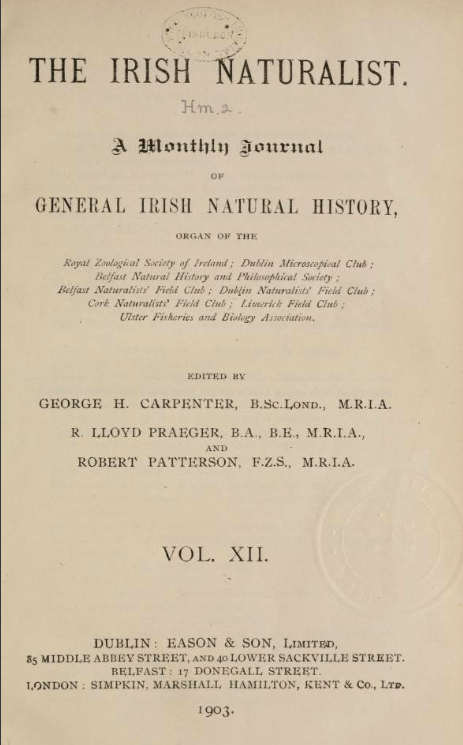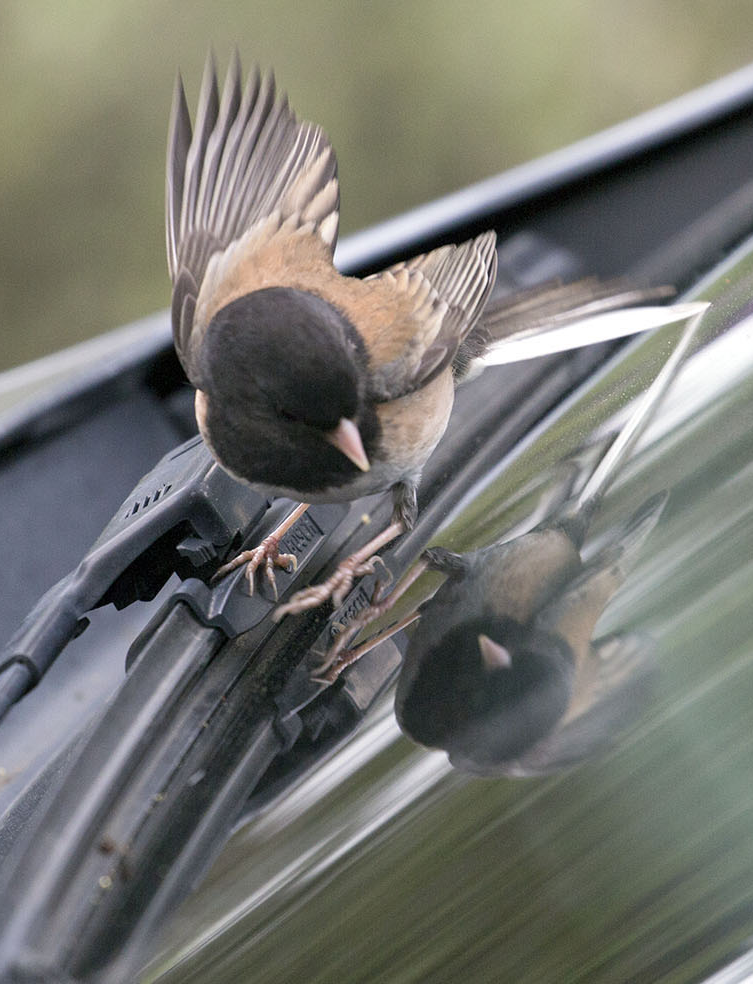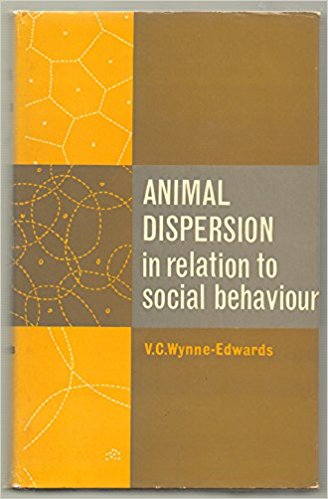Unless you have been living in a cave for the past couple of months, you will have been well aware of the spectacle of mature, powerful males posturing to one another, showing off their weapons, advertising their prowess, and intimidating their neighbours. Some of them even coerced females into unwanted sexual acts, or spent some time cheating on their mates. I refer, of course, to what Charles Bethune Moffat called ‘The Spring Rivalry of Birds‘ in his 1903 paper in The Irish Naturalist.

Moffat was born in January 1859 on the Isle of Man in the Irish Sea, 10 months before the publication of Darwin’s Origin of Species. Moffat’s family soon moved to Ireland where he grew up and eventually spent his entire professional career as a lawyer and journalist.
 But Moffat was also a consummate naturalist who published about birds in popular articles in Dublin’s Daily Express, and in scientific papers in The Irish Naturalist [1] and The Irish Naturalists’s Journal. His paper on the ‘spring rivalry’ is best known because it was probably the first publication to present, in English [2], the idea that male birds defend a territory: “…that the battles fought between the male birds in spring have for their object, not the winning of particular females, but the acquiring of suitable plots of land, and that the song and bright plumage of the male are a warning to other males and an intimation to a female that a suitable territory has been acquired.” [3]
But Moffat was also a consummate naturalist who published about birds in popular articles in Dublin’s Daily Express, and in scientific papers in The Irish Naturalist [1] and The Irish Naturalists’s Journal. His paper on the ‘spring rivalry’ is best known because it was probably the first publication to present, in English [2], the idea that male birds defend a territory: “…that the battles fought between the male birds in spring have for their object, not the winning of particular females, but the acquiring of suitable plots of land, and that the song and bright plumage of the male are a warning to other males and an intimation to a female that a suitable territory has been acquired.” [3]
Reading Moffat’s spring rivalry paper, I get the distinct impression of a man who was thoughtful, logical and a keen observer—all traits that would have made him an excellent lawyer and journalist (both of which he was) and a really good scientist. He noted, for example, “…that we seldom find in close proximity to each other two nests belonging to the same species of bird.”, “…that cock birds in early spring spend a great deal of their time in fighting one another.”, and “..that we must have a very large number of non-breeding birds of both sexes, prevented from breeding simply by the fact that they have no suitable ground.” [3]
Moffat liked Darwin’s ideas about evolution and natural selection but he thought—like many others at the time—that Darwin was simply wrong about sexual selection, especially with regard to female choice:
…the number of hen-birds, so far as we can gather, is fully equal to the number of cock-birds, so that when all the fighting is over, there is nothing to prevent all the birds from marrying and settling down to ‘ live happily ever after.’ We may suppose, in our sentimental way of looking at things, that even then the poor beaten cock-bird suffers from a certain amount of depression when he thinks of the greater charms of her to whom he first paid court. But we have the assurance of experts that no such thing happens; that one hen-bird is quite as good as another, and that every cock-bird is perfectly content with the first mate he can get. That is sometimes laid down as the reason why hen-birds, as a rule, have not developed bright nuptial colours or melodious voice…I think we must infer that there is very little free choice or aesthetic selection, and that the hen bird is mainly guided by prudential motives in accepting the owner of the soil. [3]

Having observed male Blackbirds and Chaffinches continually battling their reflections in his windows, Moffat quite perceptively concluded that these fights were about space, as there was no female in sight and those reflected interlopers had nether sung nor shown any interest in the male’s mate: “the imaginary enemies, on whom so much fury was expended, were guilty of no crime beyond that of being in the spot where they were.” [3]. Even when 35 Starlings were shot one at a time, consecutively, from a single breeding pair, the remaining bird almost immediately got a new partner, suggesting to Moffat that birds did not really care who they mated with, and that space was therefore of primary importance.
But why ‘space’? Moffat was also skeptical about Darwin’s idea that—at least in birds—many more offspring are produced than could possibly survive to reproduce: “I cannot believe that the theory of Natural Selection — for which I have a great respect, and which I must carefully guard myself against appearing for a moment to call in question— requires this sacrifice, or anything like it…as regards birds I am altogether unable to find grounds for believing in so great a death-rate..” [3]. Indeed, his censuses of his local House Martins suggested to him that the annual mortality rate was very low, for just about as many birds arrived back in spring as had departed the previous autumn [4].
 His solution to this conundrum of territoriality—anticipating V. C. Wynne-Edwards’s ideas on group selection published 60 years later—was: “..that there are checks of a prudential kind on the marriage of birds, and that these checks may be a very important factor in keeping the number of birds absolutely permanent.” [3]. Thus Moffat argued that birds were simply being prudent, dividing up the available land in such a way that would keep the population stable, without the needless waste of reproduction wherein the excess individuals would die off as Darwin had argued.
His solution to this conundrum of territoriality—anticipating V. C. Wynne-Edwards’s ideas on group selection published 60 years later—was: “..that there are checks of a prudential kind on the marriage of birds, and that these checks may be a very important factor in keeping the number of birds absolutely permanent.” [3]. Thus Moffat argued that birds were simply being prudent, dividing up the available land in such a way that would keep the population stable, without the needless waste of reproduction wherein the excess individuals would die off as Darwin had argued.
He was certainly not alone in his skepticism about sexual selection and population regulation, and it took the reaction to Wynne-Edwards’s ideas—mainly by David Lack and George Williams—to set the record straight with regard to the logic of natural selection. And that set the stage for a re-examination of sexual selection and its influence on the songs, plumage colours and ornaments, and courtship behaviours of birds—traits that benefit individuals not species.
So, next time you hear the twitter of North America’s Orange-crowned Warbler, see European Coots threaten their neighbours, watch the Siberian Grouse perform his flutter-jump, or hear the Oriental Cuckoo whistle his ridiculous ‘poo-poo’, remember that none of this male behaviour is performed for the good of the species.
SOURCES
-
Altum B (1868) Der Vogel und sein Leben. Münster: Niemann. [available here]
-
Kennedy PG (1946) Charles Bethune Moffat. (1859-1945). British Birds 39:81–82.
-
Moffat CB (1903) The spring rivalry of birds. Some views on the limit to multiplication. The Irish Naturalist 12:152–166.
-
Stresemann E (1947) Baron von Pernau, pioneer student of bird behavior. The Auk 64:35–52.
- von Pernauer FJA [published anonymously without his consent] (1702) Unterricht, was mit dem lieblichen Geschöpff, denen Vögeln, auch ausser dem Fang, nur durch die Ergründung deren Eigenschafften und Zahmmachung oder anderer Abrichtung, man sich vor Lust und Zeitvertreib machen könne, gestellt Durch den Hoch- und Wohlgeborhrnen Hn. Freyherrnn: Herrn von P [ available here]
-
White G (1772) Letter XI to The Honourable Daines Barrington. [available here]
-
Wynne-Edwards VC (1962) Animal Dispersion in Relation to Social Behaviour. Edinburgh: Oliver and Boyd.
Footnotes
- papers in Irish Naturalist: he published 40 papers and short notes in this journal, as well as 40 book reviews
- first presentation in English: Ferdinand Johann Adam von Pernauer (1702) and, especially, Bernard Altum (1868) had previously introduced and developed the idea of territoriality and the concept of ‘territory’ in birds. Moffat also notes that Gilbert White had a similar view that he expressed in a letter written in 1772: “such a jealousy prevails between the male birds that they can hardly bear to be together in the same hedge or field…it is to thisspirit of jealousy that I chiefly attribute the equal dispersion of birds in the spring over the face of the country.”
- quotations: all from Moffat (1903)
- House Martin observations: his mistake here is that he assumed that these were the same individuals, not realizing that overwinter mortality would have left openings to be filled by birds that might otherwise have been non-breeders
Fascinating, Bob.
On Wed, May 30, 2018 at 10:53 AM, History of Ornithology wrote:
> Bob Montgomerie posted: “BY: Bob Montgomerie, Queen’s University | 28 May > 2018 Unless you have been living in a cave for the past couple of months, > you will have been well aware of the spectacle of mature, powerful males > posturing to one another, showing off their weapons, adver” >